The X Button
Guardian Force
by Todd Ciolek,
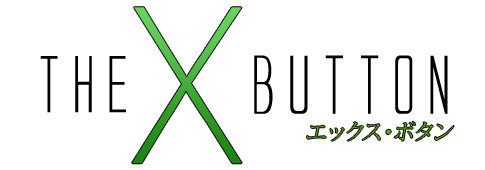
The Sega Saturn is mentioned a lot in this week's column, which gives me good enough reason to go on about the console for a few paragraphs. I owned one when the late-1990s system wars were in full swing and the Saturn was clearly a distant third to the Sony PlayStation and Nintendo 64. I didn't care. I bought a Saturn in 1997 knowing full well it was dead last, because I wanted Cyberbots and Guardian Heroes and Panzer Dragoon Zwei and other games I'd read about in GameFan over the last year. I already had a PlayStation (of course), but I was finally old enough to afford more than one current game system, and nothing would stop me from putting down money on a Saturn.
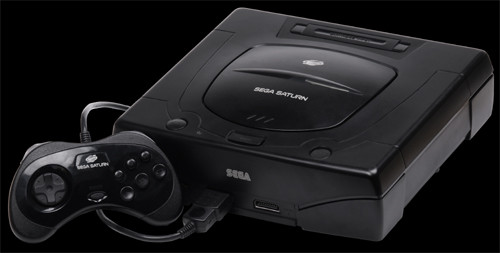
It was my introduction to owning a doomed game console. While the Nintendo 64 and PlayStation fought amongst themselves, the Saturn's North American releases slowed to a pathetic trickle, and by 1998 nearly every third-party publisher had fled the system. So resolute Saturn owners turned to the Japanese market and imported games like Radiant Silvergun, Sakura Wars, Princess Crown, Silhouette Mirage, Soukyugurentai, the remaining two-thirds of Shining Force III, and near-perfect versions of Capcom and SNK fighters. I could very well credit (or curse) the Saturn for turning me into a serious game nerd, one who was willing to buy games he couldn't even understand.
I was lucky that the Saturn was the first failed system I ever owned. It lasted three years, it was at least supported someplace, and many of its best offerings had pretty high resale values down the road. Had I been older and a little dumber with my money, I might've paid $170 for a Virtual Boy or $700 for a 3DO on their launch dates. And those would teach much harsher lessons.
NEWS
SEGA's 7TH DRAGON 2020 HAS HACKERS, HORROR, HATSUNE MIKU
The original 7th Dragon, released on the DS in 2009, still comes up often when we discuss all of the RPGs confined to Japan this generation. Sadly, 7th Dragon 2020 will likely meet the same untranslated fate when it ships for the PSP on November 23. Why's that sad? Because it's shaping up to be an impressive dungeon hack set in a future Tokyo conquered by dragons and aliens plants that turn normal animals into hostile terrors. The dragons are by far the greatest hazard—unlike most of the enemies encountered randomly in dungeon hacks, the beasts will actually chase players through levels.
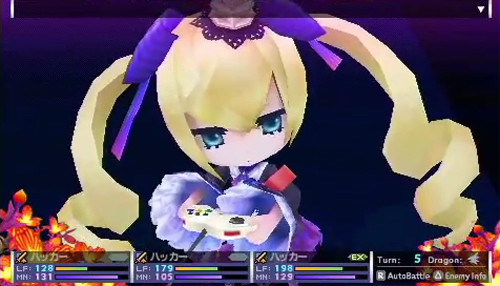
To combat the flowers and dragons, players create and customize big-headed party members, choosing their skills and even their (well-known) voice actors. As this is the future and not some magical medieval realm that never was, characters pursue suitable classes like those of psychics and street samurai. Most of them fill typical RPG roles, of course. Psychics use spells, samurai attack physically, and tricksters blow things up real good. The hackers are the best of the group, as they're able to whip out game controllers and hack the planet to damage foes and give allies stat boosts. And the controller even looks like a Sega Saturn pad.

The developers of 7th Dragon 2020, including Phantasy Star creator Rieko “Phoenix Rie” Kodama, make the most of Sega's alliance with unholy synthesized pop idol Hatsune Miku. A freshly redesigned Miku shows up in the game's apocalyptic future, and players are tasked with rescuing her from a dragon. So great is Miku's sway over the game that players can even let her sing all of the game's background music in her bleeping artificial voice. Dungeon hacks are supposed to be torturous, after all.
CAVE DOES SHOOTING-FREE MAHJONG
There are hundreds—no, thousands of mahjong games available in the Japanese market, so a new one normally wouldn't stoke any attention. But Mahjong Rokumeikan is the work of Cave, a long-standing developer of shooters, shooters, shooters, and the occasional non-shooter like Nin2 Jump or Princess Debut. Mahjong Rokumeikan is something largely new for the company, as it's a social game for PCs. With a lineup of plutocrats, butlers, and maids at their disposal, players earn money through mahjong matches against other online opponents.
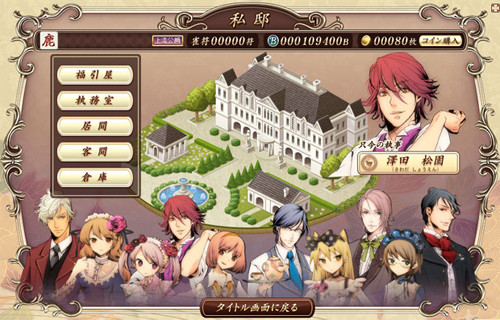
Mahjong Rokumeikan follows the standard operating procedure for online games: playing's free, but extra features cost money. Cave appears to have finally discovered this enterprise, because a mahjong title isn't their only such venture. There's another Cave social-thingy game in the works for the PlayStation Vita, though no title's available yet. Some fans may complain over Cave neglecting their traditional bedrock of shooters, but those shooters are niche projects. Cave has to fund its niche projects somehow, and no one's hiring them to make Princess Debut 2: The Legend of Luciano's Gold.
CHRONO CROSS AND SEVERAL FINAL FANTASIES HEAD TO THE PSN
Square sprang a “Summer of Adventure” campaign on PlayStation owners back in 2000, starting with Legend of Mana and ending with the much-anticipated Chrono Cross. Eleven years later, the considerably changed Square Enix has a “Winter of RPGs” pitch for the PlayStation Network, and it begins with Chrono Cross this week.
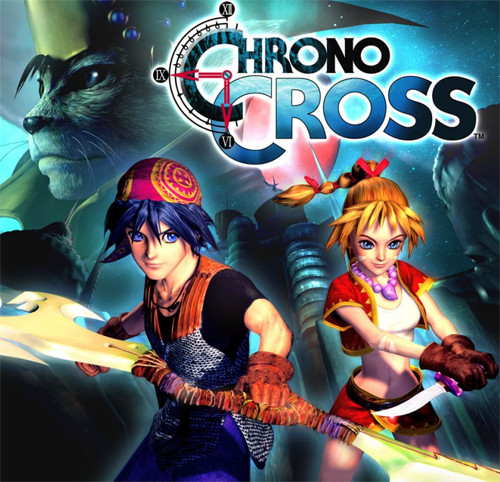
As a sequel of sorts to Chrono Trigger, Chrono Cross left a number of fans unsatisfied back in 2000. It's certainly a flawed game: the story sputters out a few hours in, the 40-plus lineup of characters is mostly annoying, and the battles, while cleverly structured, feel a tad stiff. But it's enjoyable through all of that, and, in my opinion, the colorful look and Yasunori Mitsuda soundtrack make it one of the prettiest games around—even eleven years after the fact.
The other games in the Winter of RPGs aren't as important, at least not in this form. They're the PlayStation versions of Final Fantasy V and VI, previously released in one go as Final Fantasy Anthology. They're certainly playable, but they're burdened by load times and, in Final Fantasy V's case, a substandard translation. Both were reissued on the Game Boy Advance, and Final Fantasy VI can be had on the Virtual Console as Final Fantasy III. For those who still want the PlayStation versions and their CG cinema scenes, Final Fantasy V arrives on November 22 and Final Fantasy VI hits on December 6.
DOWNLOAD ROUNDUP: OCTOBER
BLOODRAYNE: BETRAYAL
If Bloodrayne's fallen from grace, feel free to blame Uwe Boll's films. After three Boll-backed abominations, Rayne needs an image makeover, and she gets one in the world of brutal, side-scrolling action games. WayForward specializes in old-school recreations, including Shantae and the recent Aliens Infestation, so they knew what they were doing with Bloodrayne: Betrayal. It's set up as a platform-action game where Rayne, redhead half-vampire that she is, sucks blood from her foes when not slicing them to ribbons or gunning them down. Her world also gets a new design that's somewhere between a DevaintArt imitation of Bruce Timm and Gungrave, but it's arguably the slickest look she's ever had. It's hard to dislike a vampire heroine who rides a rocket coffin. Betrayal seems a relatively forgiving game at a glance, as Rayne's equipped with firearms, close-range blades, and a decent life bar. But her moves take a lot of getting used to, and she's able to backflip, scale walls, and refill her energy by draining humanoid foes. The game's early stages rely too heavily on repetitive butler-ghouls and security systems for Rayne to fight, but the game eventually unleashes all sorts of creatively vicious creatures. It's not quite as smooth as the best of its genre—Rayne's a fairly large target, and her elaborate acrobatics can sometimes lead to cheap hits. Still, it's a challenging ride for the classic action-game afficionado and a downright vexing experience for the completist, as both the end-of-level grades and item-collecting are rather strict. |
DAYTONA USA A brief history of Daytona USA is in order. The arcade game was a hit back in the mid-1990s, but the first home version, released upon the Saturn's U.S. launch in 1995, was noticeably slower and had terrible clipping in its scenery. People complained, so Sega tried again in 1996 with a Championship Circuit Edition that featured online play and better graphics. It still wasn't the same as the arcade. A Dreamcast remake followed in 2001, and while it looked better than the arcade in some ways, people still complained because the controls were precise enough. And now, sixteen years after the Saturn port of Dayton USA, there's an Xbox Live Arcade and PlayStation Network version that should, in theory, be everything that Daytona USA fans want. And it is. The game's now in HD, and everything else about Daytona USA is fully intact. The controls work surprisingly well with a standard Xbox 360 or PlayStation 3 controller, and this downloadable version supports racing wheels on both consoles. It also replicates the head-to-head nature of the arcade original with eight-player online races, and other modes invoke time-trials, survival tests, and other general challenges. There's even a karaoke feature that lets players sing along with the game's soundtrack while providing on-screen transcriptions of such tender lyrics as “Way hey.” None of these additions changes the fact that Daytona USA is a fairly simple game, an arcade racer that lacks in length and variety compared to modern genre outings. But it's a perfectly captured shot of Sega's arcade prowess circa 1994, and that's a big selling point for anyone who came to love Daytona USA in arcades.
|
GUARDIAN HEROES The Sega Saturn got little respect in its day. It was only after the system was thoroughly stomped by the PlayStation and Nintendo 64 that a decent chunk of geeks noticed the many excellent Saturn games and paid out the nose for them. While Saturn highlights like Panzer Dragoon Saga and Dragon Force remain expensive eBay finds, Treasure ported two of their Saturn gems for the affordable Xbox Live Arcade. One is the shooter incomparable Radiant Silvergun, and the other is Guardian Heroes. Heroes is technically a beat-'em-up in the side-scrolling, thug-pounding tradition of Final Fight, but there's so much more to it. For one thing, it's staged in a cartoonish medieval-fantasy world of magic and swordplay and, well, robots. And all of that unfolds in branching story paths that steer a band of heroes, a rebel princess, and a zombie warrior into a power struggle between angels and demons…er, Skyborn and Earthblood. Exploring the numerous and frequently ridiculous plot veins is engaging, but Guardian Heroes truly excels in its gameplay. It's at first more restrictive than the typical brawler; instead of roaming into the foreground and background, characters jump across three distinct planes of combat. There's good reason for this, though. It brings a focused fighting-game energy to the battles, as players slash and jump and block with effective speed. The enemies aren't particularly bright, but they're numerous, and the chaos that erupts is unlike anything seen in other action games. It's hard to find a comparison for a game where you'll take out a line of enemy knights with an ice laser just before a mecha explodes and throws you high in the air, blocking like crazy. And you come down slashing through a pack of trolls and bounce them across the screen in a crazy juggling combo. That's Guardian Heroes. The Xbox Live remodeling of the game perks up the graphics to mostly impressive effect. The character sprites all look great, though some of their portraits now resemble over-sharpened DeviantArt sketches. The gameplay also benefits from helpful aerial dashing, and the new translation is both more ornate and more amusing. The real improvements, however, are the game's extras modes, where players can use any characters they've encountered in the main storyline, be it a random civilian or a hyper-powerful end boss. These modes include a time-attack challenge where players fend off endless waves of foes, and the versus battles now allow up to twelve players to join in at once. Granted, most people pick the aforementioned and overpowered bosses, but all sorts of novel matchups await creative players.
|
NEXT WEEK'S RELEASES
COOKING MAMA 4: KITCHEN MAGIC 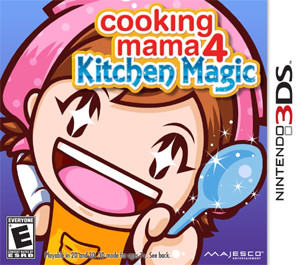 Developer: Office Create
Developer: Office CreatePublisher: Majesco Platform: Nintendo 3DS Players: 1-4 MSRP: $29.99 The original Cooking Mama truly represented the rise of mainstream mini-game collections on the Wii and DS. It's a very simple series when measured critically, but this gives it traction among players who like to cook and don't mind imitating it with Wii remotes and DS touch-screens. And yes, Cooking Mama is still around. While no longer the talk of the party-game industry, Mama continues to expand, as September's Camping Mama proves. But cooking is still the franchise's forte, and that's where Mama returns just in time for this holiday season. As in prior Cooking Mama games, the fourth presents culinary challenges carried out one mini-game at a time, whether it's cracking eggs, rolling dough, or enduring the unpleasant task of peeling a shrimp. Cooking Mama 4, as the first 3DS outing of the franchise's food-focused branch, uses the system's gyroscope for these various recipes, and over 200 of them are promised by Majesco. Of course, there are only 60 or so mini-games to compose those recipes, but the game allows some combinations for new dishes. Corn dogs might not appear particularly appetizing in pixeled 3-D, but such are the wages of Cooking Mama's new territory. |
SUPER MARIO 3D LAND 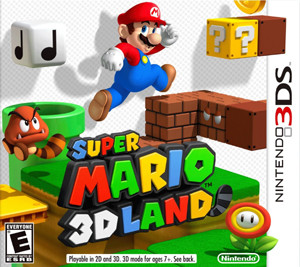 Developer: Nintendo EAD Tokyo
Developer: Nintendo EAD Tokyo Publisher: Nintendo Platform: Nintendo 3DS Players: 1 MSRP: $39.99 Super Mario 3D Land appears to be Nintendo's answer to the fans who simply cannot stop comparing every new Mario game to Super Mario Bros. 3. Super Mario 3D Land is a concoction of many familiar Mario elements in 3-D gameplay, but there's notable emphasis on the leaf-based power-ups of Super Mario Bros. 3. In fact, they even spur the primitive little plot. A royal tree sheds its leaves in a strong wind, and the vagrant foliage gives raccoon-tail powers to anything it touches. Oh, and Princess Peach is kidnapped by Bowser. In his quest to rescue her, Mario gets the raccoon-tail abilities through the Tanooki Suit, plus such new power-ups as a boomerang-throwing turtle guise. Aside from the references to Mario's biggest game, Super Mario 3D Land plays primarily like Mario's best-known 3-D platform games, namely Super Mario 64 and Super Mario Galaxy. In that manner, Mario somersaults and dashes around three-dimensional levels populated with goombas, koopas, and even the castle-guarding Boom-Booms from Super Mario Bros. 3. The expansions put new spins on older concepts such as platform-creating switches and hillside enemies, and the game's designed to be played in the system's stereoscopic 3-D. The 3DS gyroscopic feature also comes into play when Mario uses binoculars to observe the layout of a level. |
ULTIMATE MARVEL VS. CAPCOM 3 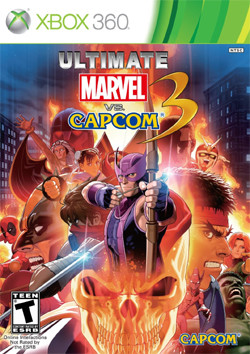 Developer: Capcom
Developer: Capcom Publisher: Capcom Platform: Xbox 360/PlayStation 3 Players: 1-2 MSRP: $39.99 Those who bought the original Marvel vs. Capcom 3 back in February expected Capcom to trot out an upgrade for the game, but most of these wary buyers thought it was at least a year away, as was the case with Super Street Fighter IV. Well, that grace period was cut down to nine months, and the Ultimate version of the game is now upon us, with twelve new characters, some new backgrounds, numerous gameplay adjustments, and at least one rather interesting new mode. And it's forty bucks, meaning that anyone who paid full price for both games will spend $100 on Marvel vs. Capcom 3 this year. Minus the fifteen bucks you might get for selling the first edition of Marvel vs. Capcom 3, that is. There's still time to throw it on eBay. In all fairness, the new material is interesting. The Marvel side gets Iron Fist, Doctor Strange, Ghost Rider, Nova, Hawkeye, and the rather amusing Rocket Raccoon. The Capcom half of the game receives Nemesis from Resident Evil 3, Firebrand from Ghouls N' Ghosts, Frank West from Dead Rising, Vergil from Devil May Cry, Strider Hiryu, and the oft-requested Phoenix Wright (who, in a strange turn, looks sorta lame in preview videos). The new backgrounds are also nice, including a “Days of Future Past” scene that references all of the unused characters from Marvel vs. Capcom 2. Just about every returning character is changed in some minor or major way, from new moves to new priorities and hitboxes, though the game remains a loose, hectic, crazy-flashy affair compared to the likes of Street Fighter or The King of Fighters. There's another technically new fighter, as the towering end boss Galactus is now playable. Or at least his upper half is. More interesting is “Heroes and Heralds,” a new mode where players gather cards that screw with the game left and right: characters turn invisible, get super-armor, or lose their health bars entirely. The cards themselves also feature numerous Capcom and Marvel characters. It's a concession prize for those who are still disappointed that Jin Saotome and Cyclops didn't make it in as playable characters. |
discuss this in the forum (30 posts) |
this article has been modified since it was originally posted; see change history
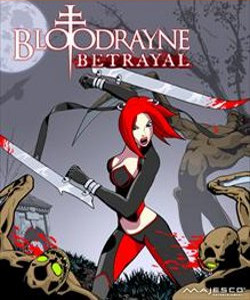 Developer: WayForward Technologies
Developer: WayForward Technologies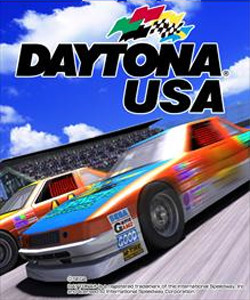 Developer: Sega
Developer: Sega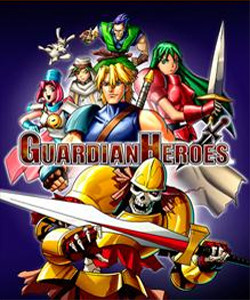 Developer: Treasure
Developer: Treasure